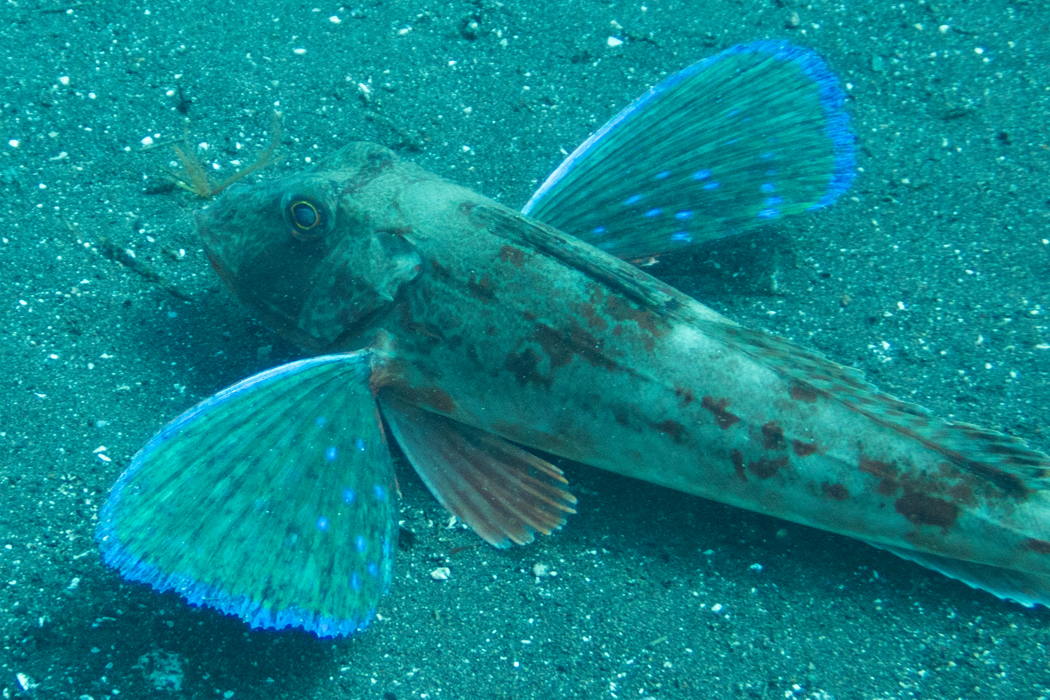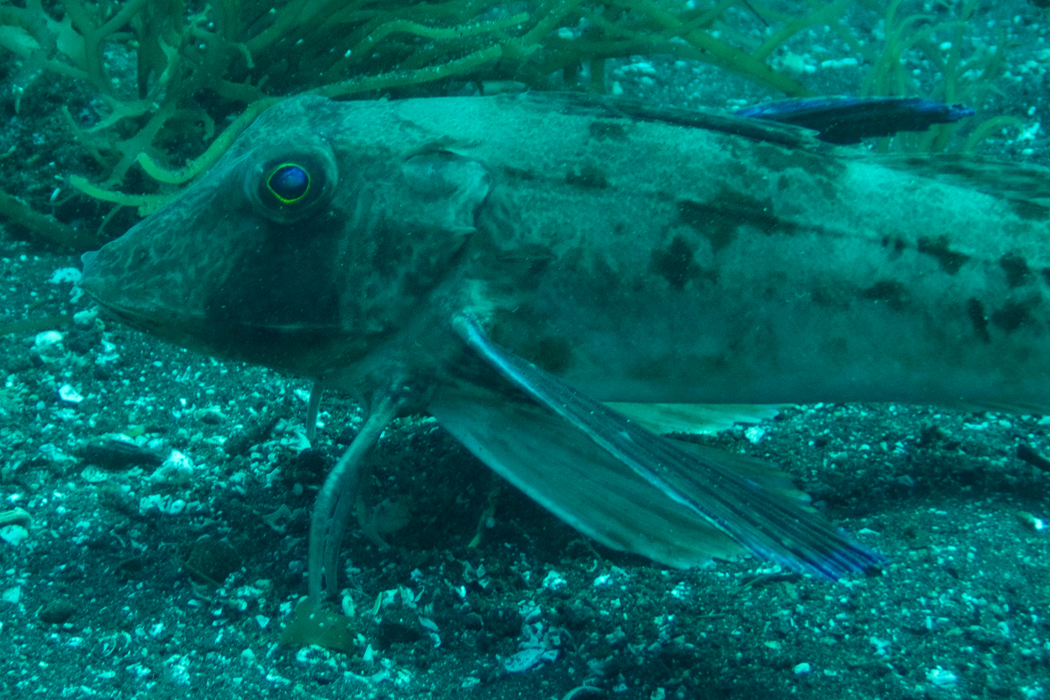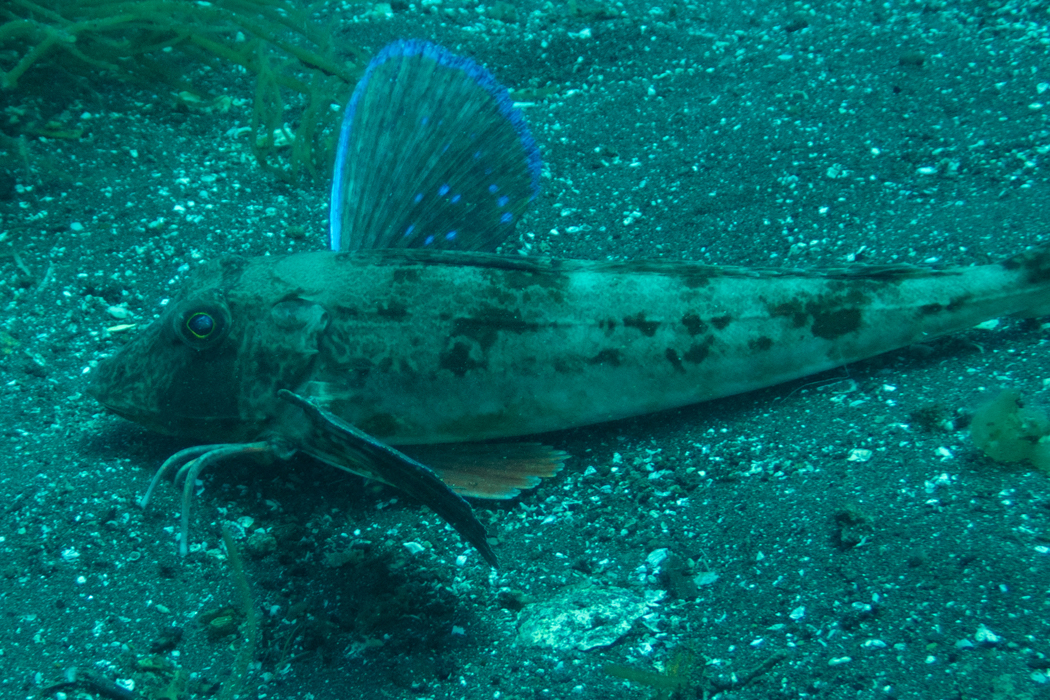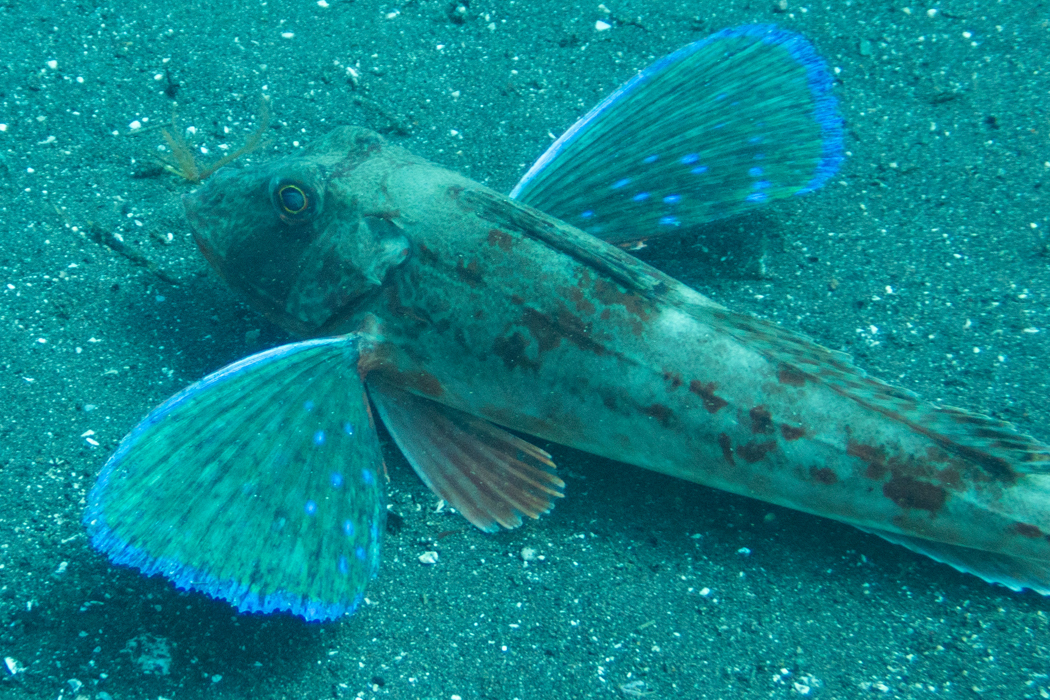
Gurnard
Spread blue-green pectoral fins.
| Scientific name | Chelidonichthys spinosus |
| English name | Gurnard |
| Japanese name | 竹麦魚・魴鮄 |
| Classification | Actinopterygii |
| Classification details | Scorpaeniformes Triglidae |
| Full length | ~40cm |
| Distribution | Sand and mud bottom from southern Hokkaido to the South China Sea. |
Characteristics
A saltwater fish with bright blue-green pectoral fins. The head is large and the back of the body is tapered. Body color is pale brown with red spots. The pectoral fins are parallel to the seabed and open in a semicircular shape, with bright blue edges. Blue spots are scattered in the green. The bottom of the pectoral fin is red, and soft rays are developed like legs. They sometimes move along the seafloor as if they were walking on these soft rays.
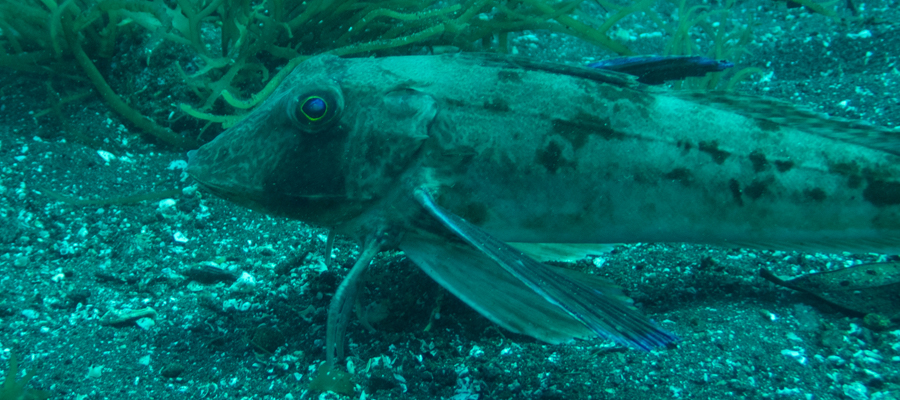
Ecology
Found on sandy and muddy bottoms in shallow to deep waters. It searches for prey while walking on sandy and muddy bottoms with soft rays, preying on crustaceans and small fish. The redness of the body increases with growth, and the pectoral fins also become brightly colored.
Habitat
Inside Osezaki Bay
Taken during a dive in Osezaki Bay in May. It sat alone on the sandy mud bottom, spreading its pectoral fins. It didn't move very quickly, moving slowly along the ocean floor. It is characterized by having "legs", and if you look only at the base of the pectoral fins, it looks like a crustacean.
Pictures
Introducing a picture of Gurnard.
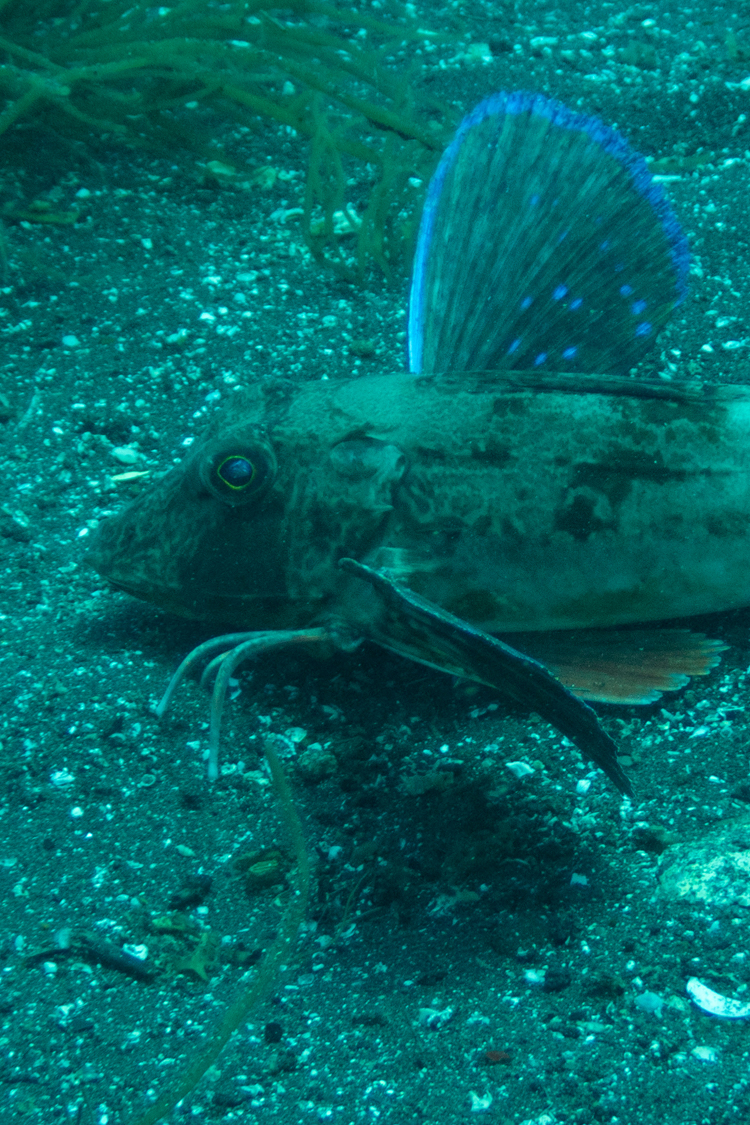
Picture book

Terek Sandpiper
The beak is upturned.......ead more.

---
dark color reminiscent of the crimson cords of weapons......ead more.

Little Tern
The sudden descent from hovering is splendid.......ead more.

Hollyhock
Blooms during the rainy season.......ead more.

Blue-and-White Flycatcher
A kind of blue bird that represents Japan with beautiful twitter.......ead more.
